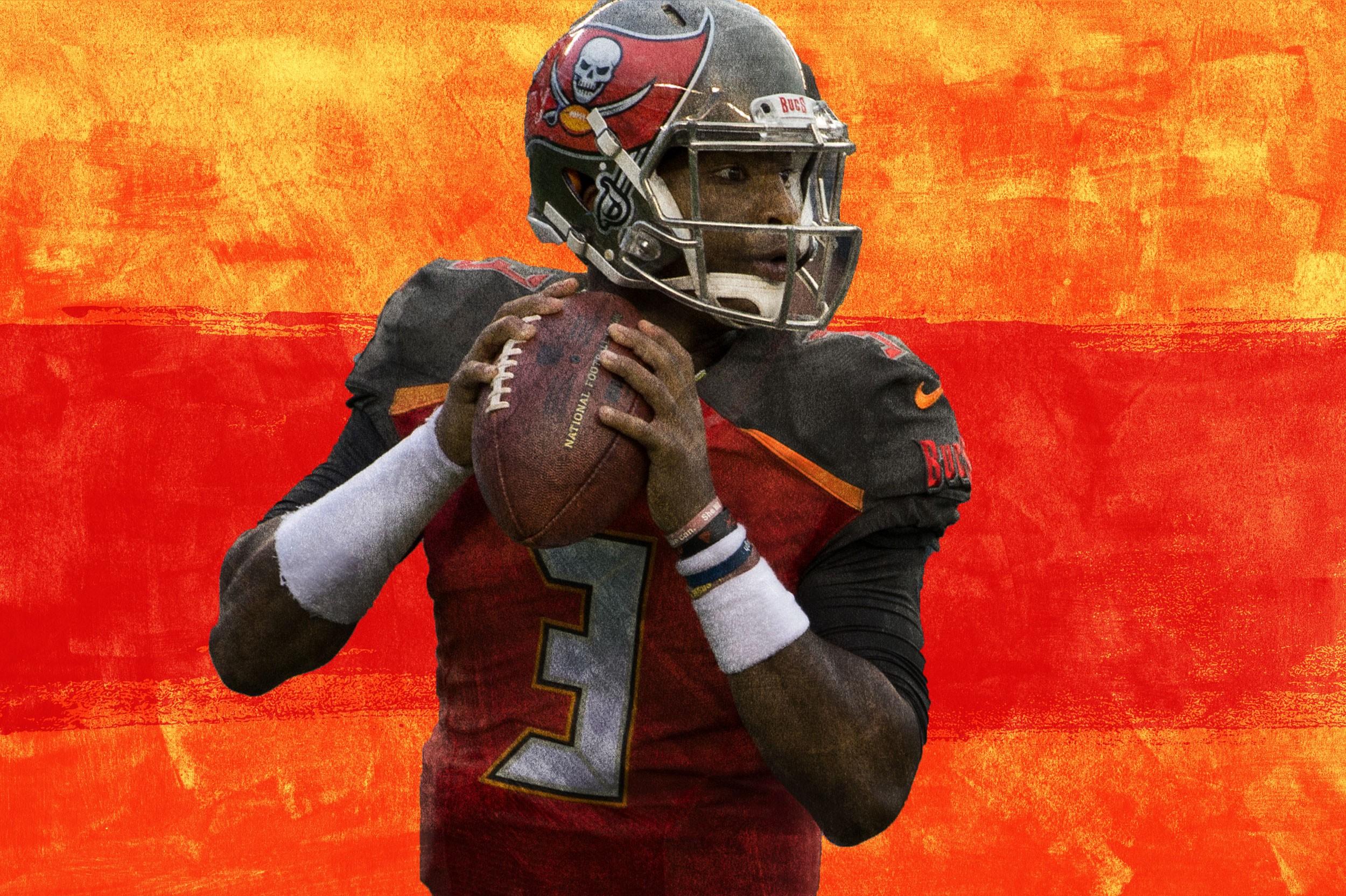
With only a couple of exceptions, last season’s Tampa Bay offense was what most people thought it would be. After cratering to 2–14 in 2014 to land the no. 1 pick that netted quarterback Jameis Winston, the Bucs put the former Heisman Trophy winner under center and made the leap from ineptitude to mediocrity in an instant.
The 2014 Bucs were a train wreck: QBs Mike Glennon and Josh McCown combined for a 56.8 completion percentage and a 21-to-20 touchdown-to-interception ratio, dooming Tampa Bay to the league’s worst offensive DVOA. Last year’s Bucs were much better: They jumped from 32nd to 17th in Winston’s debut season, and made almost the same improvement in passing DVOA (31st to 17th).
That’s the sort of progress you’d expect when moving from quarterback inadequacy to quarterback competency. The question now is whether Winston and the Bucs can take the next step forward, from an offense that holds its own to one that frightens defenses. Before that can happen, though, there are a few final areas that need to be addressed.
Will the Real Doug Martin and Mike Evans Please Stand Up?
The Bucs’ two biggest offensive surprises last year came from the two players we thought we knew best heading into the season. Doug Martin was nothing short of brilliant in 2015 running behind a line that was equal parts young and just plain bad. Two injury-riddled seasons took the shine off Martin after his excellent rookie campaign in 2012 — to the point that the Bucs actually declined his fifth-year option — but he was back in a big way last fall: 4.9 yards per carry, 1,402 rushing yards, and the sort of explosion that’d been missing for the past few seasons.
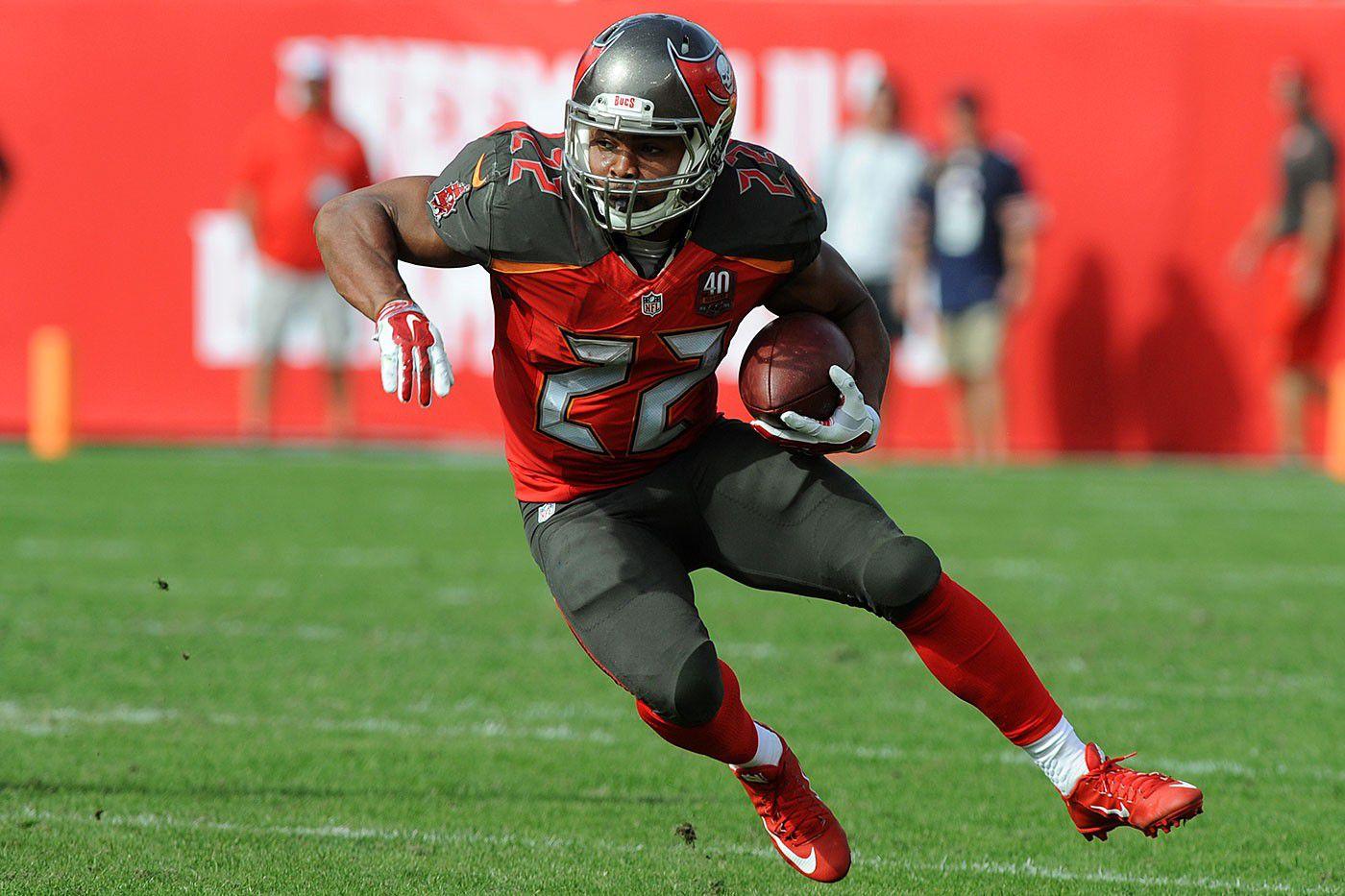
It was enough to earn Martin a five-year, $35.8 million deal (with $15 million guaranteed) this offseason, putting him fifth among running backs in both annual salary and guarantees in 2016. That may seem like a big bet on Martin after one good season, but the back we saw in 2015 was absolutely among the five best in the NFL. And with all the guaranteed money in Martin’s deal coming in the next two years, it’s actually a short-term commitment that won’t keep Tampa Bay from re-signing guys like receiver Mike Evans when the time comes.
Speaking of Evans, even with the Bucs’ abysmal quarterback situation in 2014, he still managed to look like a star, racking up 1,051 yards with 12 touchdowns. Evans had all the makings of a monster as a rookie: Not only did he assert his ability to manhandle defensive backs in the red zone — catching eight of 13 targets and scoring six touchdowns — he also silenced any concerns about his ability to torch corners on plays down the field. He seemed like the ultimate weapon in the passing game, and the team thought that with Winston aboard, Evans would ruin NFL defenses in his second year.
Well, not quite. The 6-foot-5, 231-pounder was hampered by some nagging injuries in 2015, including a hamstring issue that kept him out of a blowout loss to the Titans in Week 1 and a groin tweak that limited him during a win over the Falcons in early November. He also led the league in drops (11), saw his catch percentage fall from 55.7 to 50, and reeled in only three touchdowns (and two of his 15 end zone targets).
For the Bucs to reach their offensive ceiling, 2015 will have to prove an aberration for one of their skill-position stars and not the other. Tampa’s backup running back, Charles Sims, is a capable pass catcher and one of the league’s better no. 2 options, but Martin will get the majority of the work, and with a line that’s still a work in progress. He’ll have to be close to what he was last year for the Bucs to match their output on the ground. As for Evans, his sophomore season — and not his rookie one, when he dropped only four balls — is probably the hiccup, and given the rest of Tampa’s receivers, it had better be. Vincent Jackson recently turned 33, tight end Austin Seferian-Jenkins remains a wild card, and the Bucs still lack an established third option at wideout. Only nine players got more targets than Evans (148) last year, and once again, this passing game should belong to him. He’ll need to show better than he did a year ago.
The Young Linemen
The Bucs’ 2016 draft strategy — shoring up their pass defense by picking cornerback Vernon Hargreaves III and defensive end Noah Spence, and in a move that will forever be amazing, trading up to grab kicker Roberto Aguayo in the second round — came at the cost of bolstering their offense. That means their best hope for improvement will come through the development of their 2015 haul, and beyond Winston, that necessitates a step forward for two other second-year starters: left tackle Donovan Smith and right guard Ali Marpet.
Smith’s rookie season was kind of a nightmare. He was regularly roasted by opposing pass rushers, and wasn’t much better in the running game. He and Gosder Cherilus combined to form what might have been the league’s worst pass-blocking starting tackle duo. There’s a reason only one team in the NFL used six offensive linemen more frequently than Tampa in 2015; Winston was hit a league-high 96 times, 17 more than any other quarterback.
Smith may have the massive frame of a tackle (6-foot-6, with 34 3/8-inch arms), but it’s yet to be seen if he has the feet to survive on the outside. The Bucs’ best-case scenario is that he experiences a huge jump from year one to year two, but that’s far from a guarantee given how rough his 2015 was. The good news for Tampa Bay is its right tackle situation should be vastly improved with the return of veteran Demar Dotson. Having to rely on Cherilus for 13 games last year ended well for no one. Dotson is a reliable, proven commodity, and I have to assume he’ll be a welcome sight for Winston.
On the other side of the line, there’s more cause for optimism. For as disheartening as the 2015 Donovan Smith experience must have been, there’s some solace to be found in Marpet’s rookie play. In one year, the Bucs guard went from Division III Hobart College, which played games against Merchant Marine and Ithaca College during his senior season, to being a starter in the NFL. And he was pretty good! Physically, he held up against the run, and the uptick in size and power wasn’t an issue for the 6-foot-4 307-pounder. Marpet’s problems are in pass protection, where he struggles against quicker defensive linemen. That’s correctable, though.
At the other guard spot, Tampa Bay loses Logan Mankins to retirement, which is a tough blow. (His replacement, free-agent signing J.R. Sweezy, was always pretty meh in Seattle.) But it’s reasonable to think that with continued development from Marpet and Smith, and with Dotson securing the right side of the line, this unit can be better, especially in pass protection.
A Penchant for Self-Destruction
Looking at the numbers, it seems like last year’s Bucs offense should’ve finished better than 17th in DVOA. Tampa Bay was fifth in yards per drive, third in three-and-out percentage, and seventh in plays per drive. It was third (ahead of the freaking Seahawks, who finished first in offensive DVOA) in yards per play. Only the Cardinals and Steelers — two of the league’s most dynamic offenses — were better. The Bucs’ problem, more than anything else, was that they couldn’t stop shooting themselves in the foot.
Evans’s drops were only a small part of the issue. Tampa Bay led the league in offensive penalties per game (5.3), with Evans, Cherilus, and Smith acting as the main culprits. Only two NFL players were called for more penalties than Smith — and Cherilus just happened to be one of them. Smith was flagged 13 times, including six holding calls; Cherilus got dinged for only five holding calls, but still managed 15 penalties in 13 starts. I’m not even sure how that’s possible. Evans’s year might have been the most bizarre, though. According to the Football Outsiders Almanac, he tied for 11th in offensive penalties, and was the only non-lineman or tight end to finish in the top 25.
The Evolution of Jameis Winston
If the Bucs’ penalty problem wasn’t enough to short-circuit promising drives, Winston’s bad habit of throwing the ball to the opposing team was. During his final season at Florida State, Winston had 18 interceptions. As a rookie, he had 15 picks and the sixth-worst interception rate in the league among quarterbacks who started at least half their team’s games.
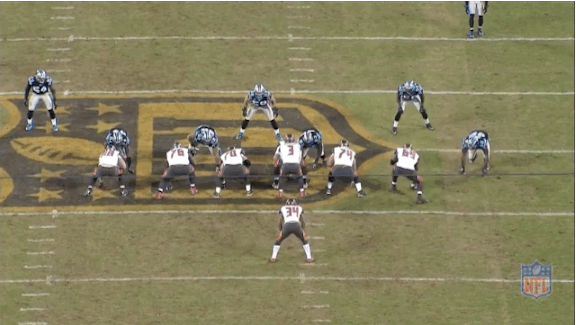
Part of Winston’s problem was his occasionally awful decision-making. I mean, look at the above throw against the Panthers in Week 17. Like … why?
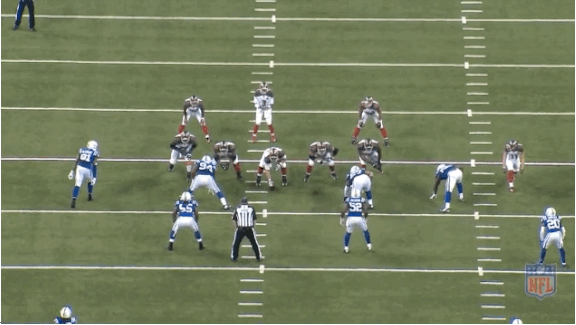
Even more worrisome, Winston was among the least accurate QBs in the league last season. He had a receiving corps composed mostly of Ents, but even when throwing to a pair of 6-foot-5 targets, Winston would too often sail passes that should have been completed. He doesn’t have the arm strength to overcome mechanical inconsistencies; when he falls away from throws, it’s anyone’s guess where the ball will land. At best, his errant throws will sail out of bounds or bounce a few yards short of an open receiver. At worst, they’ll go 5 yards wide of Winston’s desired destination and end up in the arms of a defender.
If Winston can clean up some of his mechanical issues and not force as many throws, he has a real chance to develop into a top-tier QB. There were times last year when the qualities that evaluators loved when he was a prospect were on full display. Plenty of NFL quarterbacks are five or 10 years into their careers and lack the anticipation that Winston brings. He’s also already proved adept at understanding coverages and windows, and cuts loose throws earlier than even more experienced passers can.
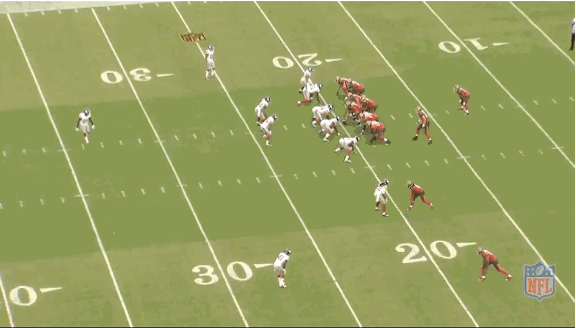
He lets this one go so early — before Evans even makes his cut — that the ball looks like it’s not intended for no. 13 until the very last moment. It’s plays like this that make up most of the promise for the Tampa Bay offense, and it’d be reasonable to expect more of them (and fewer of the mistakes we saw out of Winston as a rookie) in 2016. With the next logical step in his development, improved play at tackle, and a decline in the drive-destroying antics that cost the Bucs a year ago, there’s reason to believe this offense could be even more potent than many people think come fall.